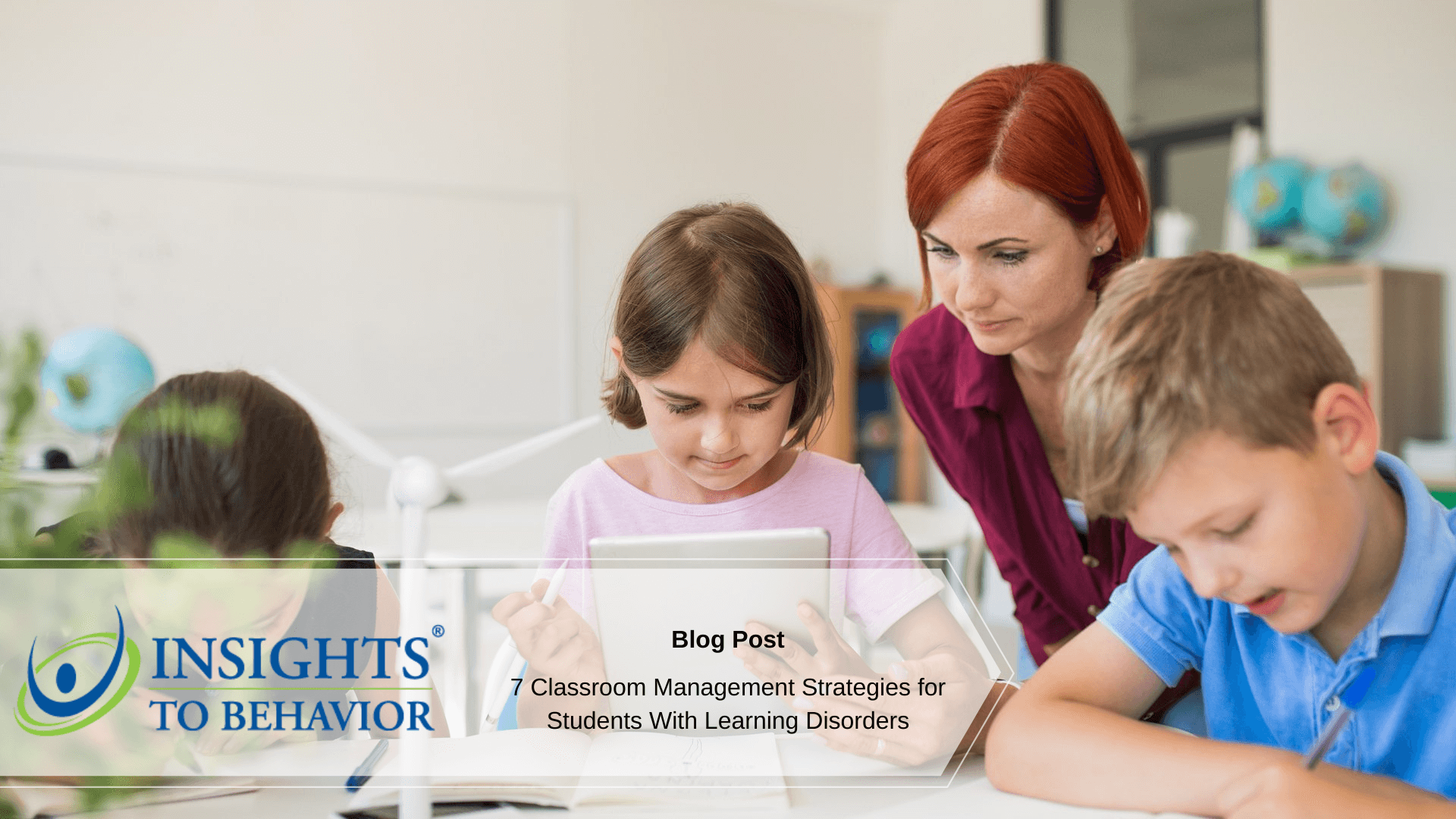Approximately 59% of students diagnosed with special needs spend more than 80% of their school day in a general education setting. There are lots of benefits to structuring education in this way. Yet, it can also prove challenging when implementing classroom management strategies.
Students with learning disorders often have unique needs and learning styles. It’s is important to account for these when structuring lessons and procedures. Here’s how to recognize learning disabilities and create an effective classroom management strategy.
How to Recognize When a Student Has a Learning Disorder
You should be able to identify when one of your students might have a learning disorder. This is especially true when developing your classroom management plan. Students with learning disabilities often struggle with one or more of the following:
- Reading and/or writing
- Mathematics
- Coordination
- Memory
- Short attention span
- Ability to follow directions
- Staying organized
- Telling time
Behavioral signs often accompany these difficulties. Students can display anything from extreme emotional outbursts to restlessness and general disruptiveness. Understand that age groups impact which behavior management strategies are most effective.
Classroom Management Strategies for Students With a Learning Disability
Having effective classroom management strategies in place helps mitigate disruptions and maximize learning. The following strategies are effective for both general and special education students.
1. Create an Inclusive Learning Environment
Developing a welcoming environment for students depends on your words and attitude. You are responsible for making your students feel safe, respected, and acknowledged. Do this by performing simple, friendly gestures throughout the day.
Greet your students at the door and check in regularly. Give them your undivided attention and use positive reinforcement instead of punishment. Evidence suggests that positive reinforcement techniques have greater success in molding class behavior.
Administrators and special education directors play a key role as well. They are instrumental in creating an inclusive learning environment. Learn how to create a behavioral intervention strategy for your school today.
2. Familiarize Yourself With Students’ Unique Rhythms
One important classroom management strategy is getting to know your students. Figure out where their strengths lie and which areas they find challenging. Positively reinforce their strong points and be more intentional when teaching difficult topics.
It’s vital to understand where students with learning disabilities are coming from. You need to be aware of environmental triggers. These can include colors, noises, people, locations, and other stimuli.
Once you can identify what causes a student to lose focus, you can adjust and plan accordingly.
3. Intentional Classroom Seating
Create an intentional seating chart. Disruptions happen two to three times as often when students choose their own seats.
Placing students in rows is better than groups or circles for a few reasons. It provides students with their own space, so they don’t feel uncomfortable. It also keeps their attention directed forward.
Avoid seating students with attention disorders near windows or computers. Active screensavers or moving objects can draw their focus away from the lesson. This leads to disruptions down the road when students don’t understand the material.
Having assigned seating works for older age groups as well. It mitigates disruptions and distractions caused by friendly socialization.
4. Practice Consistency
Adding diversity to your lesson plan keeps students interested and engaged. However, all activities should fall into a structured lesson plan or schedule. Behavior management studies show that all students benefit from having a dependable routine.
Having constant variation or unpredictability can be destabilizing. This is even more evident in students with learning disabilities.
5. Encourage Social Interactions
Peer tutoring is an effective tool in classroom management strategies. Pair students with learning disorders with cooperative peers to help them stay focused.
You will often find both students benefiting from the interaction. One receives extra help and guidance. The other studies the material in a different way by teaching it to their classmate.
Social interactions also extend to behavior modeling. Losing your temper will only make a tense situation worse and lead to more disruptive behaviors. Practice patience and model accountability.
Your students will respect you more if you are willing to admit when you were wrong or overreacted. Use this practice frequently in your classroom management strategy.
6. Understand the Importance of Visual Aids and Stimuli
Verbal repetition isn’t always the best way to get an idea across. Visual learners will benefit more from having information posted around the room.
Classroom rules should be visible at all times. They not only help visual learners but serve as a reminder to other students as well. It also allows you to reference the rules when broken or questioned.
Students with learning disabilities often have an affinity for certain stimuli. Computers, visuals, and colors are common sources of attraction. If this is the case, incorporate these elements into your lesson plan to maximize focus.
Be aware that other students might experience the opposite. They could find the bright colors intrusive, invasive, or loud. Consider this as you develop your classroom management strategies.
7. Be Flexible and Stay Abreast of the Latest Techniques
No two students are exactly alike, and no two days will be the same either. Adaptability is a key component of any successful behavior management strategy. Stay organized and plan for potential disruptions.
Keep educating yourself on the latest research and classroom management strategies. Enroll in a class to broaden skills or attend a workshop. At Insights to Behavior, we have over 60 hours of training workshops to expand your skillset.
Understanding Different Behavioral Management Strategies
Classroom management strategies change depending on the age and needs of your students. When working with learning disorders, you might need to change your teaching style.
It is impossible to accommodate every student’s needs 100% of the time. Utilizing different behavior management strategies and being willing to adapt is essential.
Would you like more guidance on creating an effective classroom management strategy? Sign up for our free monthly webinar series.



